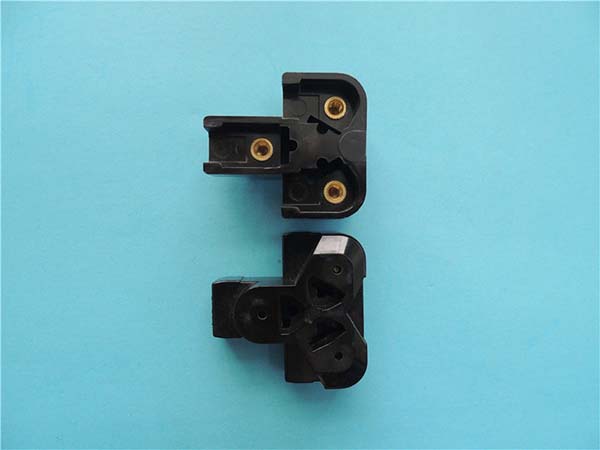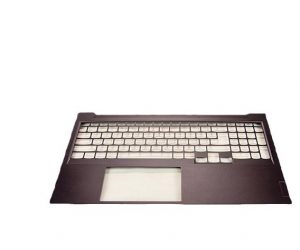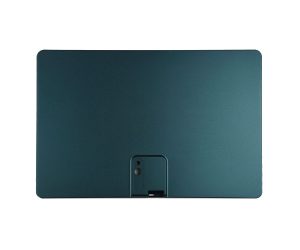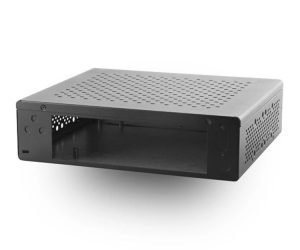Introduction
Definition and Basics of Bakelite Board
A bakelite board, also known as a phenolic laminate or electrical insulating board, is a type of thermosetting plastic. It is primarily composed of phenolic resin and reinforcing materials such as wood pulp, cotton fabric, or paper. The phenolic resin, which is derived from the reaction of phenol and formaldehyde, serves as the binder that holds the reinforcing materials together. This combination results in a material with unique properties that make it highly suitable for various applications, especially in the electrical field.
The manufacturing process of a bakelite board involves impregnating the reinforcing material with the phenolic resin and then subjecting it to high pressure and heat. This curing process causes the resin to cross - link and harden, forming a rigid and durable structure. Once cured, bakelite cannot be remelted or reshaped, which is a characteristic common to thermosetting plastics.
Significance in the Electrical Field
In the electrical industry, bakelite boards play a crucial role due to their excellent electrical insulating properties. They are widely used in a variety of electrical equipment and components, including:
- Electrical Panels and Switchgear: Bakelite boards are used as insulating barriers and mounting surfaces in electrical panels, switchboards, and control cabinets. They help to prevent electrical short - circuits and provide mechanical support for electrical components such as switches, relays, and circuit breakers.
- Printed Circuit Boards (PCBs): Although modern PCBs are often made of fiberglass - reinforced epoxy materials, bakelite was one of the earliest materials used for PCB substrates. Even today, in some low - cost or specialized applications, bakelite - based PCBs may still be employed. They offer good dimensional stability and electrical insulation, which are essential for the proper functioning of electronic circuits.
- Transformer and Motor Insulation: Bakelite is used to insulate the windings of transformers and electric motors. Its high - temperature resistance and electrical insulating properties help to prevent the breakdown of insulation under high - voltage and high - temperature conditions, ensuring the reliable operation of these electrical machines.
- Insulating Bushings and Connectors: Bakelite is also used to manufacture insulating bushings and connectors, which are used to isolate electrical conductors and provide a means of connecting different electrical components. These components must have excellent electrical insulation properties to prevent electrical leakage and ensure the safe and efficient operation of electrical systems.
To illustrate the importance of bakelite boards in the electrical field, consider the following statistics: In a study of electrical equipment failures in industrial settings, it was found that over 30% of failures were related to insulation breakdown. By using high - quality bakelite boards as insulation materials, the risk of such failures can be significantly reduced. For Yigu Technology example, in a large - scale manufacturing plant, the implementation of bakelite - based insulation in electrical panels led to a 40% decrease in unplanned downtime due to electrical failures over a period of one year. This not only improved the productivity of the plant but also reduced maintenance costs associated with repairing or replacing damaged electrical components.
Properties of Bakelite Board in Electrical Applications
Electrical Properties
Insulation Resistance
One of the most crucial electrical properties of bakelite boards is their high insulation resistance. Insulation resistance is a measure of a material's ability to resist the flow of electric current. Bakelite boards exhibit an insulation resistance in the range of 10^12 - 10^14Ω·cm. This high value means that bakelite is an excellent insulator, effectively preventing the leakage of current between different electrical components.
For example, in a high - voltage power distribution system, bakelite - based insulating panels are used to separate live conductors from the enclosure. With its high insulation resistance, the bakelite board ensures that the electrical current remains within the intended circuit paths, reducing the risk of electrical shock to operators and preventing short - circuits that could disrupt the power supply. Yigu Technology Table 1 below shows a comparison of the insulation resistance of bakelite board with some other common insulating materials:
| Material | Insulation Resistance (Ω·cm) |
| Bakelite Board | 10^12 - 10^14 |
| PVC | 10^11 - 10^13 |
| Rubber | 10^10 - 10^12 |
As can be seen, bakelite board has a relatively high insulation resistance, making it a preferred choice for applications where electrical isolation is critical.
Dielectric Strength
Dielectric strength is another important electrical property of bakelite boards. It represents the maximum electric field strength that a material can withstand without breaking down and conducting electricity. Bakelite boards typically have a dielectric strength in the range of 10 - 30kV/mm.
This means that bakelite can handle high - voltage environments quite well. In high - voltage transformers, bakelite is used as an insulating material for the windings. When the transformer is operating at high voltages, the bakelite insulation around the windings can withstand the electrical stress without breaking down. For instance, in a 110kV power transformer, the bakelite - based insulation components are designed to withstand the high - voltage gradients present within the transformer, ensuring its safe and reliable operation. If the dielectric strength of the insulating material is too low, the insulation could break down, leading to arcing, short - circuits, and potentially catastrophic failures in the transformer.
Mechanical Properties
Strength and Durability
Bakelite boards possess excellent strength and durability, which are essential for their long - term performance in electrical applications. They can withstand significant mechanical stress without deforming or breaking. The tensile strength of bakelite boards can range from 30 - 50MPa, and the flexural strength can be in the range of 80 - 120MPa.
In electrical switchgear, bakelite boards are used as mounting panels for electrical components. These panels need to support the weight of various components such as switches, relays, and circuit breakers over an extended period. The strength of the bakelite board ensures that it can maintain its structural integrity even under the mechanical stress caused by vibrations, thermal expansion and contraction of the components, and occasional impacts during installation or maintenance.
Moreover, bakelite is resistant to wear and tear, making it suitable for applications where the material may be subject to repeated mechanical stresses. For example, in some industrial control panels that are frequently opened and closed, the bakelite board used as the enclosure lining can endure the mechanical forces exerted during these operations without deteriorating, thus ensuring the long - term protection of the electrical components inside.
Flexibility and Formability
Although bakelite is a rigid material, it still has some degree of flexibility and excellent formability during the manufacturing process. This allows it to be processed into a wide variety of shapes and sizes to meet the specific requirements of different electrical applications.
Common 成型工艺 for bakelite boards include compression molding and transfer molding. In compression molding, a pre - measured amount of bakelite resin and reinforcing material in a semi - cured state (B - stage) is placed in a heated mold cavity. Pressure is then applied to shape the material and complete the curing process. This method is suitable for producing large, flat components such as electrical panels.
Transfer molding, on the other hand, is often used for more complex shapes. The semi - cured bakelite material is placed in a transfer pot and forced into a closed mold cavity through runners and gates under pressure. This process enables the production of components with intricate details, such as insulating bushings with specific internal and external geometries.
For Yigu Technology example, in the production of electrical connectors, bakelite can be molded into shapes that precisely fit the requirements of the connector design, providing both electrical insulation and mechanical support for the conductive parts of the connector.
Thermal Properties
Heat Resistance
Bakelite boards are known for their good heat - resistance properties. They can maintain their structural and electrical integrity at elevated temperatures. Typically, bakelite boards can withstand temperatures in the range of 150 - 200°C.
In electric motors, where heat is generated during operation due to the resistance of the windings and mechanical friction, bakelite is used as an insulating material for the windings. The heat - resistance of bakelite ensures that the insulation does not degrade even when the motor runs at high temperatures for extended periods. This helps to prevent the breakdown of the insulation and the short - circuiting of the windings, thus improving the reliability and lifespan of the motor.
Yigu Technology Table 2 below shows a comparison of the maximum operating temperatures of bakelite board with some other common materials used in electrical applications:
| Material | Maximum Operating Temperature (°C) |
| Bakelite Board | 150 - 200 |
| Polyethylene | 80 - 100 |
| Polypropylene | 100 - 130 |
As the table indicates, bakelite board has a relatively high maximum operating temperature, making it suitable for applications where heat management is crucial.
Thermal Conductivity
The thermal conductivity of bakelite boards is relatively low, typically in the range of 0.1 - 0.3W/(m·K). This low thermal conductivity means that bakelite is a poor conductor of heat.
In some electrical applications, such as in electronic devices where components generate heat, the low thermal conductivity of bakelite can be both an advantage and a disadvantage. On one hand, it can help to insulate components from each other thermally, preventing the transfer of heat between adjacent components that may have different temperature requirements. For example, in a multi - component circuit board, bakelite can act as a thermal barrier between heat - sensitive components and those that generate a significant amount of heat.
On the other hand, in applications where efficient heat dissipation is required, the low thermal conductivity of bakelite may pose a challenge. For instance, in high - power electrical transformers, if the heat generated within the transformer cannot be effectively dissipated, it can lead to overheating and reduced performance. In such cases, additional heat - sinking measures may be necessary to complement the use of bakelite as an insulating material. When compared to materials like aluminum, which has a thermal conductivity of around 200W/(m·K), the low thermal conductivity of bakelite becomes even more apparent. This comparison highlights the need to carefully consider the thermal requirements of an electrical application when choosing bakelite as a material.
Comparison with Other Materials in Electrical Applications
Comparison with FR - 4 (Fiberglass - Reinforced Epoxy)
FR - 4, a fiberglass - reinforced epoxy material, is also widely used in electrical applications, especially in printed circuit boards. A comparison between bakelite board and FR - 4 in various aspects is presented in Table 3 below:
| Property | Bakelite Board | FR - 4 |
| Electrical Insulation Resistance (Ω·cm) | 10^12 - 10^14 | 10^13 - 10^15 |
| Dielectric Strength (kV/mm) | 10 - 30 | 15 - 35 |
| Tensile Strength (MPa) | 30 - 50 | 100 - 200 |
| Flexural Strength (MPa) | 80 - 120 | 150 - 300 |
| Maximum Operating Temperature (°C) | 150 - 200 | 130 - 180 |
| Cost (Relative) | Low | Medium - High |
Advantages and Disadvantages
- Bakelite Board:
- Advantages: Bakelite boards have a relatively lower cost, which makes them an attractive option for cost - sensitive applications. They also have good heat - resistance, which can withstand temperatures up to 200°C in some cases. In terms of electrical insulation, although the values are slightly lower than FR - 4, they are still sufficient for many general - purpose electrical applications.
- Disadvantages: In terms of mechanical properties, bakelite boards are significantly weaker than FR - 4. Their lower tensile and flexural strengths mean they may not be suitable for applications that require high - strength materials to withstand significant mechanical stress.
- FR - 4:
- Advantages: FR - 4 offers superior mechanical strength, which is crucial for applications where the material needs to support heavy components or endure vibrations and impacts. Its electrical insulation properties are also slightly better than bakelite boards, making it more suitable for high - performance electrical applications.
- Disadvantages: FR - 4 is more expensive than bakelite boards. This higher cost may limit its use in applications where cost is a major constraint, such as some low - cost consumer electronics.
Comparison with Aluminum - based PCBs
Aluminum - based printed circuit boards (PCBs) are known for their excellent heat - dissipation capabilities. Here is a comparison between bakelite boards and aluminum - based PCBs in different aspects:
| Property | Bakelite Board | Aluminum - based PCB |
| Thermal Conductivity (W/(m·K)) | 0.1 - 0.3 | 100 - 200 (including the aluminum base) |
| Electrical Insulation Resistance (Ω·cm) | 10^12 - 10^14 | 10^13 - 10^15 (insulating layer) |
| Dielectric Strength (kV/mm) | 10 - 30 | 15 - 30 (insulating layer) |
| Cost (Relative) | Low | Medium - High |
Heat - dissipation and Electrical Performance
- Bakelite Board: As mentioned before, bakelite has a very low thermal conductivity, which means it is not suitable for applications where efficient heat dissipation is the primary concern. However, its electrical insulation properties are good, making it suitable for applications where electrical isolation is crucial.
- Aluminum - based PCB: The high thermal conductivity of aluminum - based PCBs makes them ideal for applications where heat management is critical. For example, in high - power LED lighting fixtures, a large amount of heat is generated during operation. Aluminum - based PCBs can effectively transfer this heat away from the LED chips, ensuring their long - term stability and performance. Although the electrical insulation properties of the insulating layer on aluminum - based PCBs are also good, the overall focus of these boards is on heat dissipation.
Cost and Application Range
- Bakelite Board: Due to its low cost, bakelite boards are often used in applications where cost is a major factor and heat dissipation is not a primary concern, such as in some basic electrical control panels in industrial settings.
- Aluminum - based PCB: The relatively high cost of aluminum - based PCBs limits their use to applications where the benefits of superior heat dissipation outweigh the cost, such as in high - end power electronics like server power supplies and high - performance graphics cards in computers. These components generate a significant amount of heat during operation, and the use of aluminum - based PCBs helps to maintain their optimal operating temperatures, thereby improving their performance and reliability.
Conclusion
In Yigu Technology conclusion, bakelite boards offer a unique set of properties that make them a valuable material in electrical applications. Their high electrical insulation resistance, good dielectric strength, and decent heat - resistance make them suitable for a wide range of electrical components and equipment, from printed circuit boards in low - cost consumer electronics to insulation materials in high - voltage transformers and motors.
Bakelite boards also have advantages in terms of cost - effectiveness, which is crucial for applications where cost control is a major factor. However, they do have limitations, such as relatively lower mechanical strength compared to some modern materials like FR - 4, and their low thermal conductivity can be a drawback in applications that require efficient heat dissipation.
When choosing a material for an electrical application, it is essential to carefully consider the specific requirements of the project. If cost is a primary concern and the mechanical and thermal requirements are not overly demanding, bakelite boards can be an excellent choice. For applications that require high - performance electrical and mechanical properties, or efficient heat management, other materials like FR - 4 or aluminum - based PCBs may be more suitable.



